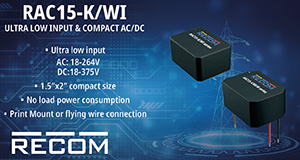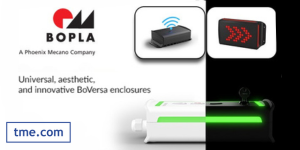In an exclusive interview with ELE Times, Mr. Brahmanand Patil, President & Managing Director of Vector Informatik India Pvt. Ltd., shed light on how Vector is driving the transformation of aerospace networks. The conversation ranged from TSN adoption to state-of-the-land cybersecurity, FACE compliance, and digital twins, with Vector sharing some insights about the technologies driving the current aerospace platforms. Excerpts.
ELE Times: What Vector is seeing in aerospace in the latest trends in the implementation of Time Sensitive Networking (TSN)?
Brahmanand Patil: We are seeing a growing adoption of Ethernet-based TSN for deterministic, synchronized, high-bandwidth avionics data. Aerospace OEMs increasingly prefer TSN over legacy buses (e.g., ARINC 429/FIBRE) to meet scaling demands for data communications among flight control, sensors, and mission systems.
At Vector, we are responding to this shift with TSN support in test tools, enabling aerospace developers to validate deterministic timing, redundant paths, and strict QoS behaviors on Ethernet.
ELE Times: How do Vector tools like CANoe.AFDX and VN interface hardware assist in testing high-reliability aerospace communication systems?
Brahmanand Patil: Reliability is non-negotiable in aerospace—and our tools are designed with that in mind. CANoe.AFDX supports simulation and conformance testing of AFDX (ARINC 664) and Ethernet-based avionics networks. It can inject faults, simulate redundant virtual links, verify timing requirements, and validate configuration against STDs like DO-160.
VN interface hardware like VN1600, VN5610 enables real-time physical-layer interaction, traffic generation, and measurements over Ethernet/AFDX/TSN. This lets engineers capture jitter, latency, packet errors, and link redundancy performance in real aircraft or Hardware-In-Loop (HIL) setups. These tools ensure avionics comms meet stringent reliability and timing metrics.
ELE Times: How does Vector support the development of software for FACE-compliant avionics platforms?
Brahmanand Patil: Vector’s toolchain integrates with model-based development (Simulink, SCADE, etc.) and supports code generation tailored to FACE Technical Standard running on POSIX or specialized FACE OS platforms. CANoe’s test framework can simulate face component interfaces, verify misuse cases, and perform regression testing across FACE segments: Safety-critical, Portable, and I/O.
Vector also enables integration testing in multi-vendor FACE environments, ensuring interoperability and that interfaces meet FACE conformance.
ELE Times: How is Vector integrating cybersecurity features (like secure communication or authentication) into its tools for aerospace applications?
Brahmanand Patil: At Vector, cybersecurity is not an afterthought—it’s embedded into the DNA of our tools for avionics. Our solutions enable rigorous testing and validation of secure communication protocols such as TLS, DTLS, IPsec, and secure extensions of AFDX. Using CANoe, aerospace developers can simulate and verify handshake mechanisms, certificate-based authentication, encryption throughput, and resilience against protocol-level anomalies.
Our network interfaces, including VN adapters, support precise packet-level timestamping and real-time capture of secure traffic—empowering developers to assess encryption overhead and identify tampering or injection attempts.
To further strengthen avionics systems, CANoe integrates powerful cyber-attack simulation capabilities like fuzzing, allowing stress testing against DoS, replay, and malformed packet attacks in Ethernet or AFDX-based networks.
On the software assurance front, VectorCAST delivers high-integrity testing across all development phases—from unit to system-level—aligned with DO-178C and DO-330 guidelines. With its data/control coupling analysis, VectorCAST ensures that inter-component communication adheres strictly to intended interfaces, helping eliminate side-channel risks and unauthorized data paths.
For static code analysis, PC-lint Plus acts as a robust SAST (Static Application Security Testing) tool. It enables early detection of vulnerabilities such as buffer overflows, memory corruption, and unsafe typecasts, aligned with industry standards like CWE, CERT C, MISRA, and AUTOSAR—minimizing attack surfaces in mission-critical avionics code.
By combining simulation, attack emulation, runtime monitoring, and static analysis under one roof, Vector provides aerospace engineers with an integrated platform to design, validate, and secure next-generation embedded systems.
ELE Times: What advancements is Vector making in cybersecure data communication in avionics networks?
Brahmanand Patil: Vector is enhancing its toolset with secure gateway emulation—including cybersecurity policies, firewall rules, and key-management scenarios—aligned with industry standards like DO-326A/ED-202A.
They’re also enabling encrypted redundant TSN path validation, where tools simulate failover in secure real-time Ethernet environments.
Support for capturing PHY-level anomalies, example ARINC 429 vulnerabilities hints at path toward intrusion detection, signal anomaly capture, and side-channel audit—it aligns with academia’s move toward voltage-based IDS
On the software side, Vector integrates Common Weakness Enumeration (CWE) into its PC-lint Plus static analysis tool. This enables early detection of critical vulnerabilities such as buffer overflows, memory mismanagement, and logic flaws—common risks in avionics data communications. Catching such issues early in development is vital for maintaining the integrity of flight-critical systems.
PC-lint Plus further acts as a Static Application Security Testing (SAST) solution aligned with DO-178C objectives. It supports high-integrity development through structural code analysis and enforces compliance before integration phases.
To ensure industry-grade secure coding, PC-lint Plus supports coding standards including:
- CERT C – Secure programming practices.
- MISRA C/C++ – Reliable and safe coding for critical systems.
- AUTOSAR C++14 – Standardized architecture for embedded automotive and avionics platforms.
Together, these capabilities enable aerospace developers to build secure, interoperable, and standards-compliant communication systems that are resilient against modern cybersecurity threats.
ELE Times: How does Vector leverage digital twin technologies in aerospace network validation?
Brahmanand Patil: The capabilities of CANoe and Interface hardware offer high-fidelity virtual replication of avionics networks; this effectively serves as a digital twin.
Through link-level simulation (AVIONICS + TSN), fault injection, deterministic latency modeling, and integration with physical hardware in HIL (hardware-in-the-loop) configurations, Vector supports the same iterative validation, anomaly detection, and real-time monitoring goals touted in digital twin use cases.








